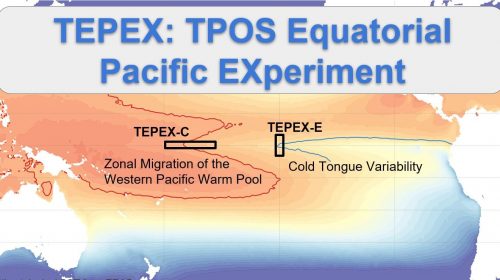Research supported by CPO’s Climate Variability and Predictability program (CVP) and published in the Journal of Climate tests the wintertime atmospheric response to North Atlantic Ocean circulation variability in CCSM4.
In the recent paper, researchers Frankignoul, Gastineau, and Kwon performed a maxiumum covariance analysis using the CCSM4 model (NCAR) to find that a meridional sea surface temperature dipole resembling a negative phase of the North Atlantic Oscillation (NAO) developed six to seven years after an intensification of the Atlantic Meridional Overturning Circulation (AMOC).
The authors determined that the delay is due to “cyclonic propagation along the North Atlantic Current and the subpolar gyre of a SST warming linked to a northward shift and intensification of the North Atlantic Current, together with an increasing SST cooling linked to increasing southward advection of subpolar water along the western boundary and a southward shift of the Gulf Stream (GS).”
The authors also found that there was no significant atmospheric response to the Atlantic Multidecadal Oscillation (AMO). These model findings are similar to observations and suggest that CCSM4 realistically represents ocean atmosphere interactions.
To access the full paper, visit: http://dx.doi.org/10.1175/JCLI-D-15-0007.1
Wintertime Atmospheric Response to North Atlantic Ocean Circulation Variability









